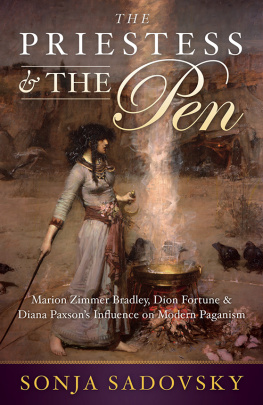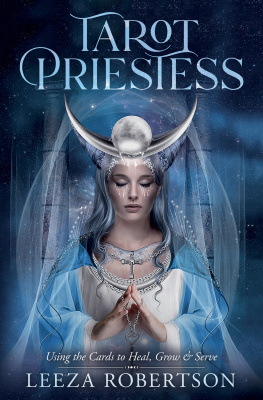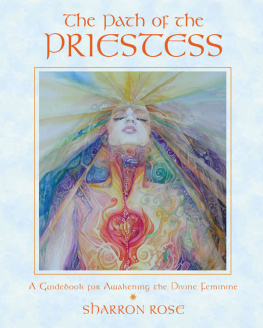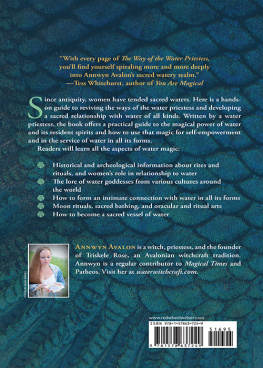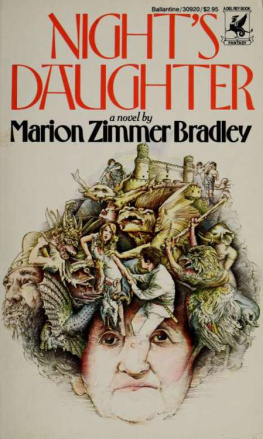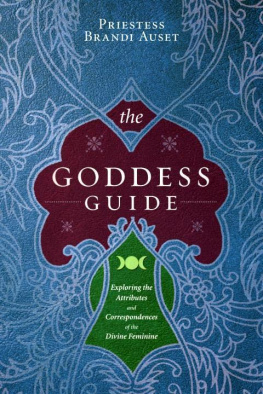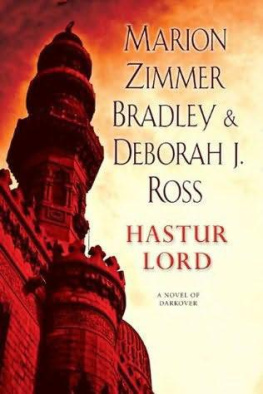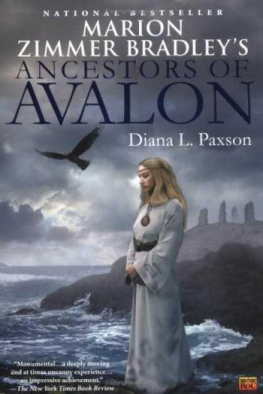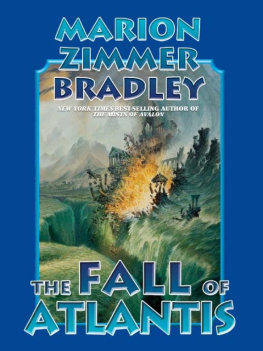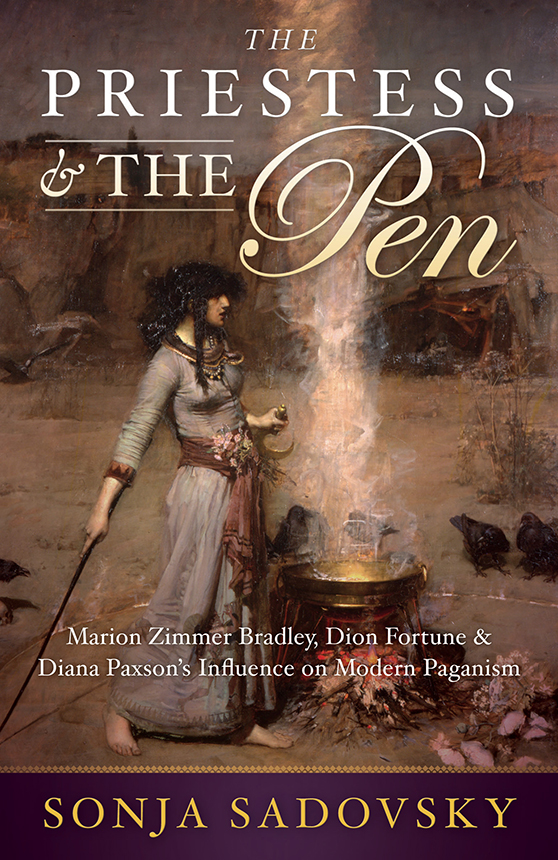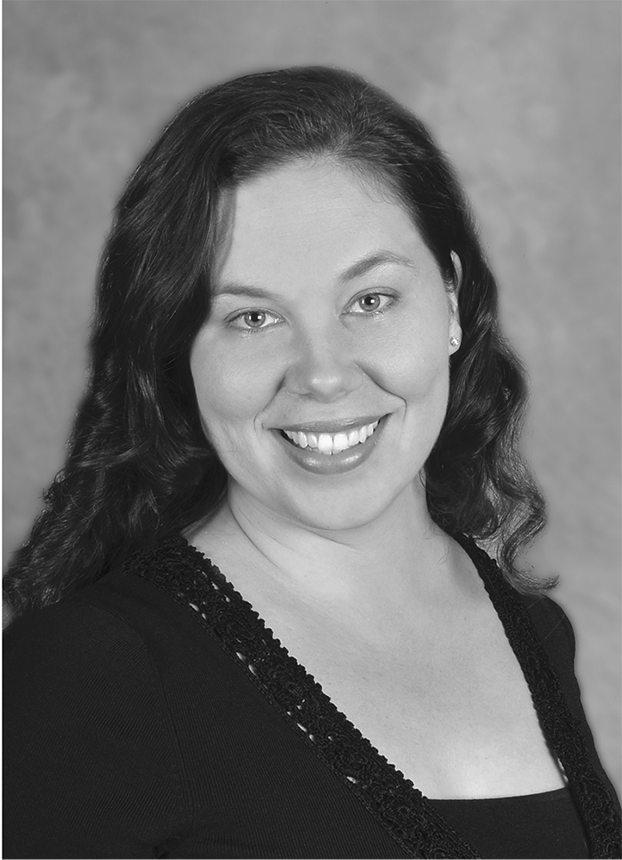Sonja Sadovsky (Tampa, Florida) holds a degree in creative writing from the University of South Florida and an MA in religious studies with a concentration in Western esotericism and mysticism from the University of Amsterdam, the Netherlands. She lectures on Wicca, Kabbalah, and Western esotericism in the modern context.

Llewellyn Publications
Woodbury, Minnesota
Copyright Information
The Priestess and the Pen: Marion Zimmer Bradley, Dion Fortune, and Diana Paxsons Influence on Modern Paganism 2014 by Sonja Sadovsky.
All rights reserved. No part of this book may be used or reproduced in any matter whatsoever, including Internet usage, without written permission from Llewellyn Publications, except in the form of brief quotations embodied in critical articles and reviews.
As the purchaser of this e-book, you are granted the non-exclusive, non-transferable right to access and read the text of this e-book on screen. The text may not be otherwise reproduced, transmitted, downloaded, or recorded on any other storage device in any form or by any means.
Any unauthorized usage of the text without express written permission of the publisher is a violation of the authors copyright and is illegal and punishable by law.
First e-book edition 2014
E-book ISBN: 9780738741765
Book design by Rebecca Zins
Cover design by Ellen Lawson
Cover art: Art Resource, Inc., image #ART137678, The Magic Circle , John William Waterhouse; photo credit: Tate, London/Art Resource, NY
Photo of H. P. Blavatsky courtesy of Theosophical Society in America Archives
Photo of Marion Zimmer Bradley Modern Arts Studio, Oakland, CA
Photo of Dion Fortune 2013 The Society of the Inner Light
Photo of Diana Paxson 2014 Mike Stalnaker
Llewellyn Publications is an imprint of Llewellyn Worldwide Ltd.
Llewellyn Publications does not participate in, endorse, or have any authority or responsibility concerning private business arrangements between our authors and the public.
Any Internet references contained in this work are current at publication time, but the publisher cannot guarantee that a specific reference will continue or be maintained. Please refer to the publishers website for links to current author websites.
Llewellyn Publications
Llewellyn Worldwide Ltd.
2143 Wooddale Drive
Woodbury, MN 55125
www.llewellyn.com
Manufactured in the United States of America
For Don and everyone else
who dares to live the dream.
Contents
by Donald Michael Kraig
: Women, Literature, and the Occult in the Modern Era
: Dion Fortune/Violet Firth
: Earth Mother/Moon Mistress
: Marion Zimmer Bradley
: Witch Queen
: Diana L. Paxson
: Warrior Queen
: The Priestess and the Problem of Feminine Evil
: New Frontiers
: Automatic Writing
Foreword
Although news articles, comments by political pundits, and advertisements from for-profit colleges continually focus on how much money you can make after you graduate from college, traditional universities prefer to help young students broaden their interests and become generally knowledgeable in a wide area of scientific, philosophical, and cultural areas, becoming more well-rounded as individuals and citizens. A students majortheir area of focusoften doesnt become apparent until the student has spent two years in college.
Besides those general courses and the core courses of their majors, students have a variety of courses from which to choose that expand upon the core of their major. These classes, as well as general classes needed to fulfill graduation requirements, are called electives. So students can focus on their core classes, they often try to take electives that have little work and make it easy to earn an A grade. When I attended UCLA, these classes were collectively known as Mickey Mouse courses, although theyre also known as gut, pipe, slide, fluff or even loan-saver classes. There are many more terms for such courses, too.
And like other students, there came a time when I needed such a course. One that fit my schedule during my junior year was Childrens Literaturekiddie litand it had a reputation for being just what I needed. Unexpectedly, it turned out to be quite challenging and had well over a thousand pages of required reading.
Still, the class itself was fun. One day, the professor came in a few minutes late. He placed the briefcase he was carrying on the podium, opened it, and pulled out a jump rope. To our amazement, he proceeded to use the jump rope (including several fancy tricks) while reciting a jumping rhyme. When he finishedand while he caught his breathwe all applauded. He asked if anyone had heard that rhyme before. Most of the three hundred or so people in the class raised their hands. Then he asked if anyone had used a different version of the rhyme. Most of the rest of the lesson consisted of students describing the different versions they had used in their younger days.
In the last minutes of the class the professor explained how rhymes, like childrens stories, change due to local history, customs, and traditions. Often, however, there were similarities, and it was that underlying similarity that was important.
In a following class, our professor discussed the works of a lecturer known for his studies in comparative mythology, Joseph Campbell. Campbell is perhaps best known for his book and TV series The Power of Myth . However, in what is arguably his most important work, The Hero with a Thousand Faces , Campbell introduced the idea that there is an important and universal myth found in countless books, stories, and legends. George Lucas eventually used this concept when he wrote Star Wars , and perhaps thats why the film has become so culturally significant. Campbell called the concept of this archetypal myth the heros journey.
According to Campbell, the journey has twelve aspects: (1) The hero is somewhat of an outcast or outsider in his everyday world. (2) Hes called to go on an adventure, but he (3) refuses the call. (4) He meets a mentor who trains him, and (5) he leaves his ordinary world behind. (6) He meets all sorts of tests and develops allies, but (7) moves toward something momentous. (8) He faces his death and/or his greatest fear, and (9) he comes out with new wisdom or some sort of skill or treasure. (10) Now he has to return to his original home with his treasure, where (11) he is tested once more, perhaps going through death to rebirth, victorious at last. (12) He either stays there with his treasure or moves on to new journeys, transformed by the experience.
At the time, I was also spending lots of hours at Melnitz Hall studying motion picture/television production and direction, which I hoped to make my major. To understand the challenges of actors, I took an acting class that was being taught by a playwright. He introduced us to the ideas of the creator of method acting, Constantin Stanislavsky. Part of the method was to find what is good, positive, and human in the most evil characters and bring that out in your acting. Similarly, actors should bring out the failures, flaws, and negativity within heroes. In this way the characters become more real. A good playwright will either allude to such characteristics or directly include them. If theyre not there, the actor using the method creates them by inventing an appropriate backstory, perhaps from the characters birth to the appearance in the movie or play.

